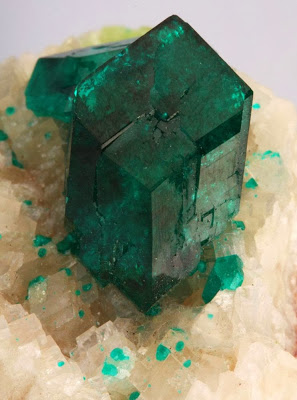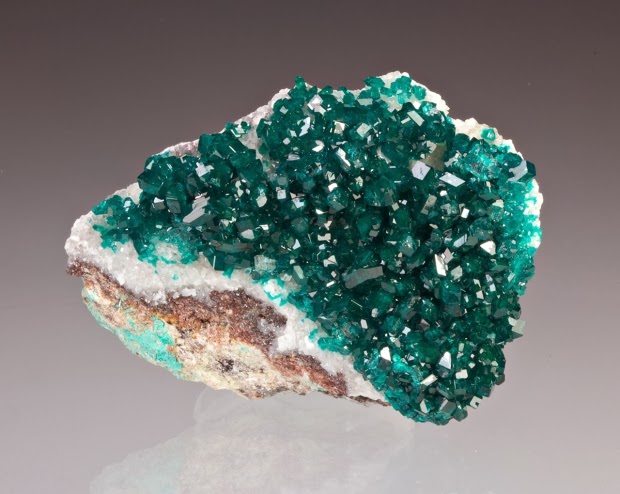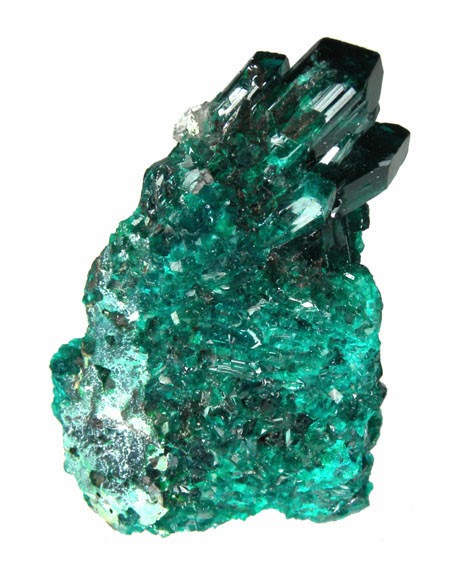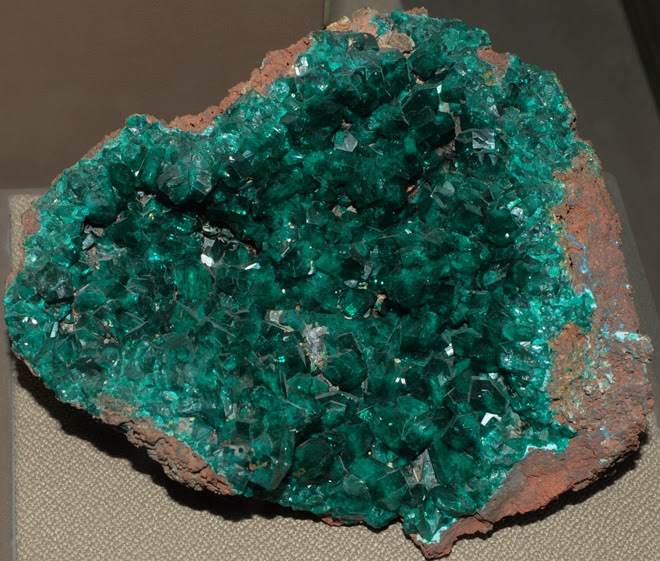
Chemical Formula: CuSiO3 · H2O
Locality: Tsumeb and Cochab, Namibia. Altyn Tube, Russia.
Name Origin: From the Greek, dia – “through” and optomai – “vision.”
Dioptase is an intense emerald-green to bluish-green copper cyclosilicate mineral. It is transparent to translucent. Its luster is vitreous to sub-adamantine. Its formula is CuSiO3 · H2O (also reported as CuSiO2(OH)2). It has a hardness of 5, the same as tooth enamel. Its specific gravity is 3.28–3.35, and it has two perfect and one very good cleavage directions. Additionally, dioptase is very fragile and specimens must be handled with great care. It is a trigonal mineral, forming 6-sided crystals that are terminated by rhombohedra.
History
Dioptase was used to highlight the edges of the eyes on the three Pre-Pottery Neolithic B lime plaster statues discovered at ‘Ain Ghazal known as Micah, Heifa and Noah. These sculptures date back to about 7200BC.
Late in the 18th century, copper miners at the Altyn-Tyube (Altyn-Tube) mine, Karagandy Province, Kazakhstan thought they found the emerald deposit of their dreams. They found fantastic cavities in quartz veins in a limestone, filled with thousands of lustrous emerald-green transparent crystals. The crystals were dispatched to Moscow, Russia for analysis. However the mineral’s inferior hardness of 5 compared with emerald’s greater hardness of 8 easily distinguished it. Later Fr. René Just Haüy (the famed French mineralogist) in 1797 determined that the enigmatic Altyn-Tyube mineral was new to science and named it dioptase (Greek, dia, “through” and optos, “visible”), alluding to the mineral’s two cleavage directions that are visible inside unbroken crystals.
Physical Properties
Cleavage: {1011} Good
Color: Dark blue green, Emerald green, Turquoise.
Density: 3.28 – 3.35, Average = 3.31
Diaphaneity: Transparent to translucent
Fracture: Conchoidal – Fractures developed in brittle materials characterized by smoothly curving surfaces, (e.g. quartz).
Hardness: 5 – Apatite
Luminescence: Non-fluorescent.
Luster: Vitreous (Glassy)
Magnetism: Nonmagnetic
Streak: green
Photos :













